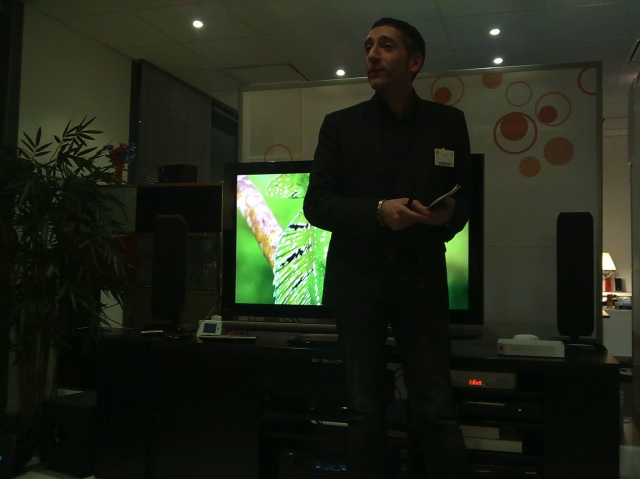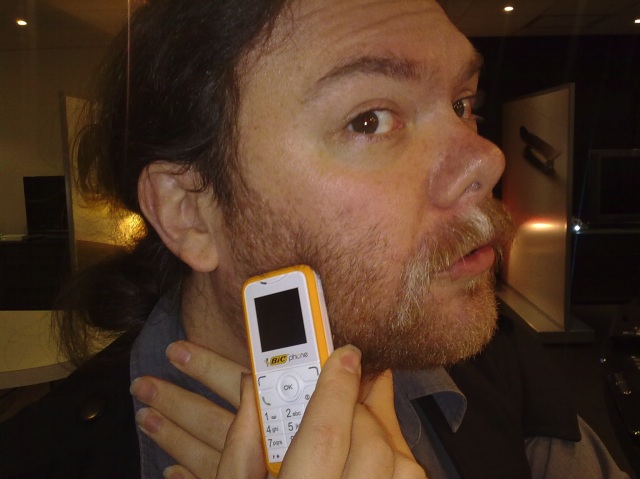It's not that different from a swish upscale apartment you'd expect to see in something like CSI New York, lots of cream sofas built with right angles, 60 inch wide-screen TV's (showing programs in 3D if you have the handy polarising glasses to hand).

Orange in France have made a strong “triple play”, where they can provide a home broadband service, phone line and TV service. Thanks to the high penetration of ADSL and Broadband in France (some 70% of homes are accessible) there is a high demand for connectivity. With home servers to connect over 3G or broadband in their Lightbox (3G) and Livebox (Broadband), working in connection with PVR and Cable TV boxes, Orange are working hard to bring more of the internet into the home and “enrich the consumer experience.”
With an almost BBC iPlayer-like zeal for their video on Demand and CatchUp TV services, their media portfolio is as strong as any other TV/Media network in the western world, while their web portals cover a wide range of topics from 'Things to see in the French cities' to Women's Health. The Orange Portal is the #3 website in France.
What's surprising is that the smartphone is relegated quite far down the list of toys. There's little integration with the the Livebox or Lightbox home network servers, which would seem to be a key area where a “triple play” would be leveraged – I suspect that the licensing from content owners who have bent toward the video on demand system have drawn a line at format switching to allow moving from one system to another.

What was on show was the continuation of the idea of Orange connecting up different parts of your social network via the handset – by bringing Facebook, MySpace, Bebo, Hi5, SkyBlock and Twitter to a single page on the Orange Mobile Portal
It's not quite a unified inbox, with each network that you're active in handed a separate section on the web page, but it provides a single spot to read and send messages using the mobile browser – and this is in addition to other ways of using these services (e.g. the recent interoperability with Twitter via SMS and MMS on Orange in the UK).
Also on display was the Orange Mobile TV solution, here of course running with the French stations, and the mobile component of Orange's advertising network – while the figures weren't separated out, they can deliver content to over 37 million users via the desk bound and mobile websites run by Orange.

There was a worrying note, at least for the Symbian Foundation and Nokia... while Orange were at pains to stress that they're partnering with all the major mobile OS's out there, the clear message was that they were developing mobile portals and applications to run first of all on the iPhone, followed by Android devices, then the rest of the pack.
The reason was simple – the users of these phones, encouraged by unlimited data, are the ones that are using the online services to a greater extent than anyone else; at least enough to make them more profitable to Orange than other ecosystems. While the iPhone has a good foothold in developer mind share to match the device numbers, Android, especially in Europe is still in a small number of handsets.
With the volume of handsets out there, Symbian should be an automatic choice for the advanced features, media and integration that Orange are looking to sell to their user base in the handset market. And even allowing for the handsets available on the network, the lack of “power users” running S60 is perhaps worrying.
While there are millions, if not billions of potential users of Symbian OS going forward, there are only few networks out there with a global reach. Orange is one of them (Vodafone and T-Mobile can figure in that pile as well). For them to have moved Symbian OS into the second pile of devices in their home of the future... well they say that the future isn't written yet. If that's true, someone better be working on a new story to tell the networks.
-- Ewan Spence, Dec 2009.

